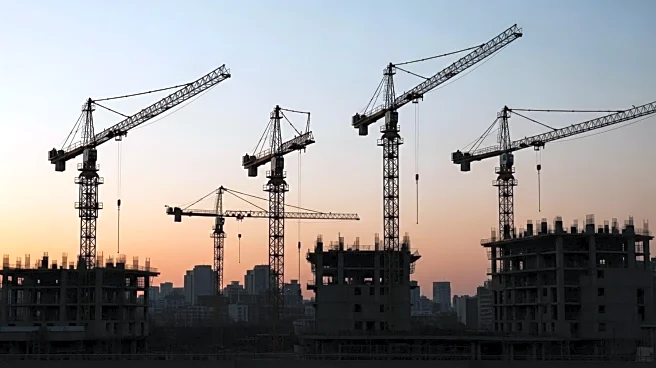What's Happening?
A recent biannual report by Rider Levett Bucknall reveals a significant 44% decrease in the number of construction cranes across 16 major North American cities. This decline, amounting to a reduction of eight cranes collectively, reflects a cautious approach in the construction industry amid ongoing economic uncertainty. The report highlights that seven cities experienced a decline in crane activity, six cities maintained their previous levels, and four cities saw an increase. Notably, New York City and Los Angeles witnessed substantial drops in crane counts, attributed to the completion of major commercial and cultural projects. However, transportation-related construction activities have shown modest growth in Los Angeles. Conversely, cities like Chicago, Denver, San Francisco, and Calgary, Alberta, reported increases in crane counts, indicating pockets of growth in sectors such as education, federal projects, and transportation.
Why It's Important?
The decline in crane counts across major cities signals a transitional phase in the construction industry, where developers are cautiously evaluating opportunities against financial pressures. This trend could impact various sectors, including commercial real estate, infrastructure development, and urban planning. The hesitancy in large-scale construction projects may lead to delays in economic growth and job creation in the construction sector. However, the report also points to growth in specific markets, suggesting potential opportunities for investment in education, federal projects, and transportation infrastructure. Stakeholders in these sectors may benefit from targeted investments and strategic planning to capitalize on emerging opportunities.
What's Next?
As the construction industry navigates economic uncertainties, developers and policymakers may focus on sectors showing growth potential, such as transportation and federal projects. Cities experiencing declines may reassess their development strategies to adapt to changing market conditions. Additionally, stakeholders may explore innovative solutions to mitigate financial pressures and stimulate construction activities. The industry may also see increased collaboration between public and private entities to drive infrastructure development and support economic recovery.
Beyond the Headlines
The decline in crane counts may have broader implications for urban development and sustainability. As cities adapt to changing construction dynamics, there may be increased emphasis on sustainable building practices and green infrastructure. This shift could lead to long-term benefits in environmental conservation and energy efficiency. Additionally, the construction industry's response to economic pressures may influence future policy decisions regarding urban planning and development priorities.












